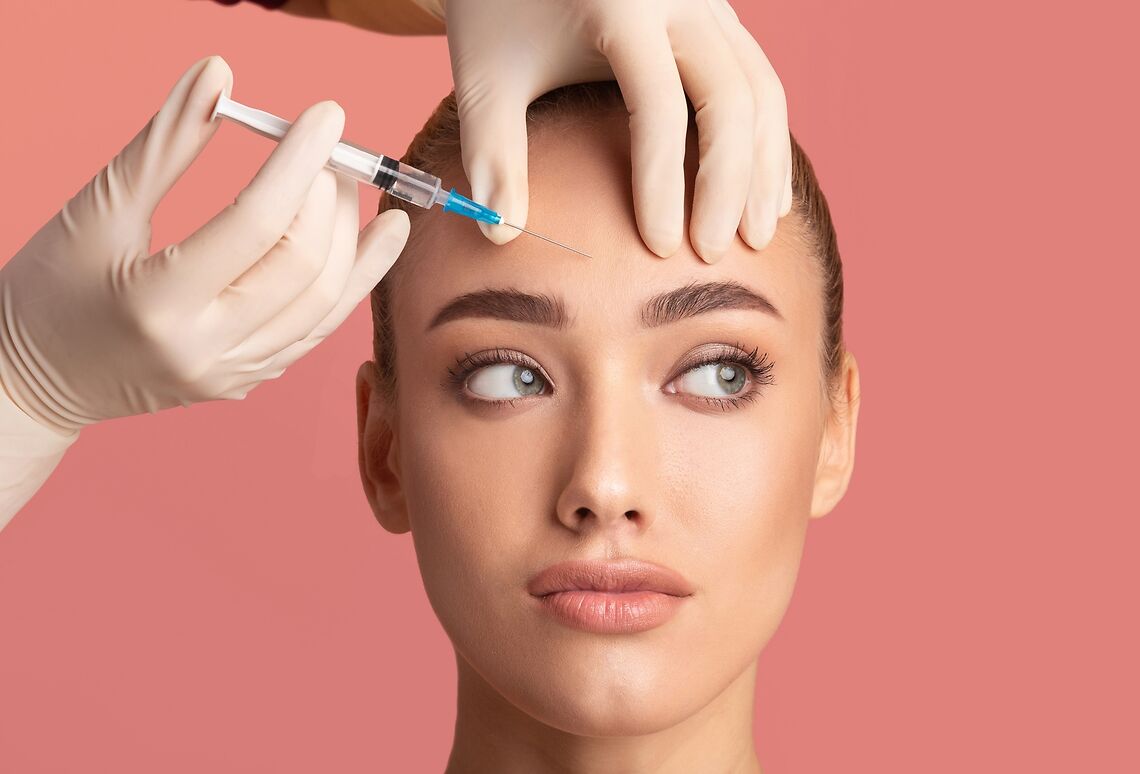 Photo Credit: Courtesy of Prostock-Studio/Shutterstock
Photo Credit: Courtesy of Prostock-Studio/Shutterstock
Jade Smith, Noelle Garbaccio, Samuel Lin, MD, FACS
Facial fillers are undergoing their most dramatic aesthetic shift since their debut in the 1980s. In 1981, collagen derived from cows became the first cosmetic injection approved by the US FDA. In 2003, Restylane was introduced as the first hyaluronic acid (HA) filler, followed by approval of the first non-HA cosmetic filler, Radiesse (calcium hydroxylapetite), in 2006.
The filler market continues to expand. In the past five years, dermal filler procedures have more than doubled their annual numbers. The ASPS Statistics Report 2023 reported 6.2 million hyaluronic acid (HA) and non-HA filler procedures in the year 2023 – that’s 17,000 fillers per day. No singular demographic is driving this trend; the percentage of total procedures by age group has been stable since 2018. While procedural numbers skyrocket, use by each age group grows at about the same rate.
One of the newest injectables, Juvederm Volux XC, may signify a shift in consumer interest. Fillers were traditionally used as soft tissue replacement, adding volume and smoothing wrinkles where age had hollowed the face. Juvederm Volux XC ushers in a new era, trading round cheeks and soft youth for sharp angles and chiseled contour. Thicker than most fillers and the first HA filler indicated for the jawline and chin, Juvederm Volux XC may mimic bone instead of fat. This builds definition and takes advantage of proportions to make faces appear slimmer instead of rounder.
To keep up with the new cosmetic trend, it is important to avoid “pillow face.” “Pillow face” describes an overfilled, swollen face caused by over-injection or filler migration. Qualified practitioners with extensive anatomy training are patients’ best resources to safely navigate filler type, frequency, injection site, and rare complications in pursuit of the desired outcome.
The frequency of filler re-injections depends on the type of filler used and the area treated. Hyaluronic acid fillers typically last 6-18 months, while other types, like calcium hydroxylapatite or poly-L-lactic acid, can last multiple years. Previous filler does not necessarily need to be dissolved before a top-up unless there are complications or an undesirable outcome that need correction. If the filler has migrated from the original injection site or has caused lumps or asymmetry, dissolving it before adding more filler will help achieve a more even result.
Filler migration occurs most often in highly mobile areas of the face with a lot of muscle activity, such as the forehead, around the lips, and the cheeks. Assisted by gravity, the muscle pushes filler through subcutaneous tissue away from the injection site. Patients with slack skin and surplus subcutaneous tissue are more likely to experience migration.
Other side effects of dermal fillers include bruising, swelling, redness, and tenderness at the injection site. These are often temporary and are resolved without treatment. More serious complications occur when filler is injected into or near a blood vessel. When blood flow is obstructed by filler, patients may experience tissue death, loss of vision, and even stroke. Although vascular complications remain extremely rare, they have become more common from 2014 to 2020 and require prompt recognition and management.
To get filler safely and avoid complications like “pillow face,” people should:
- Choose a qualified and experienced practitioner: Ensure that the practitioner is a board-certified plastic surgeon or dermatologist with extensive experience in dermal fillers. An experienced technician will have a robust knowledge of facial anatomy to avoid inadvertent injection into vessels and will follow strict aseptic techniques to prevent infections.
- Follow post-procedure care: Avoid activities that cause vasodilation, such as exercise and sun exposure, to help reduce swelling afterward.
- Avoid overcorrection: A conservative approach with gradual enhancements rather than a single large-volume injection reduces the risk of complications. Patients should schedule regular follow-ups to monitor results, address any issues promptly, and decide if additional filler is necessary.
As a disclaimer- please don’t do this at home, as it may result in injury. With more people seeking filler treatment, there is a higher demand for accessible and affordable options, which has opened the door for counterfeit products. Counterfeit dermal fillers are unregulated and can contain many harmful ingredients such as lead and mercury, causing serious health problems. Online DIY Botox and dermal filler kits endanger patient safety. A nationwide survey distributed to members of the American Society for Dermatologic Surgery (ASDS) and the American Society for Laser Medicine and Surgery (ASLMS) found that 41.1% of practitioners have encountered counterfeit injectables, and 39.7% have had patients with adverse events from them. Consumers must remain wary of too-good-to-be-true prices and verify product authenticity.
References
- Gold, M. (2010). What’s New in Fillers in 2010? The Journal of Clinical and Aesthetic Dermatology, 3(8), 36-45. https://www.ncbi.nlm.nih.gov/pmc/articles/PMC2945864/
- Health, C. for D. and R. (2021). FDA-Approved Dermal Fillers. FDA. https://www.fda.gov/medical-devices/aesthetic-cosmetic-devices/fda-approved-dermal-fillers
- American Society of Plastic Surgeons. 2023 ASPS Procedural Statistics Release (2023). https://www.plasticsurgery.org/documents/news/statistics/2023/plastic-surgery-statistics-report-2023.pdf
- Writer, D. B. | F., & Tuesday, M. 14. (n.d.). Filler market moves: What’s the word on dermal fillers in 2023? American Society of Plastic Surgeons. Retrieved July 27, 2024, from https://www.plasticsurgery.org/news/articles/filler-market-moves-whats-the-word-on-dermal-fillers-in-2023
- Xiong M, Chen C, Sereda Y, Garibyan L, Avram M, Lee KC. Retrospective analysis of the MAUDE database on dermal filler complications from 2014-2020. J Am Acad Dermatol. 2022 Nov;87(5):1158-1160. doi: 10.1016/j.jaad.2022.02.029. Epub 2022 Feb 22. PMID: 35202776.
- Vedamurthy M. Beware What You Inject: Complications of Injectables-Dermal Fillers. J Cutan Aesthet Surg. 2018 Apr-Jun;11(2):60-66. doi: 10.4103/JCAS.JCAS_68_18. PMID: 30210207; PMCID: PMC6128162.
- Brennan, R., Wells, J. S., & Van Hout, M. (2018). “Saving face”: an online study of the injecting use of DIY Botox and dermal filler kits. Plastic Surgery, 26(3), 154-159.
- Wang, J. V., Hattier, G., Rohrer, T., Zachary, C. B., & Saedi, N. (2020). Experiences with counterfeit aesthetic medical devices and injectables: a national survey. Dermatologic Surgery, 46(10), 1323-1326.
For more information, visit Dr. Brian A. Levine's social media:

























